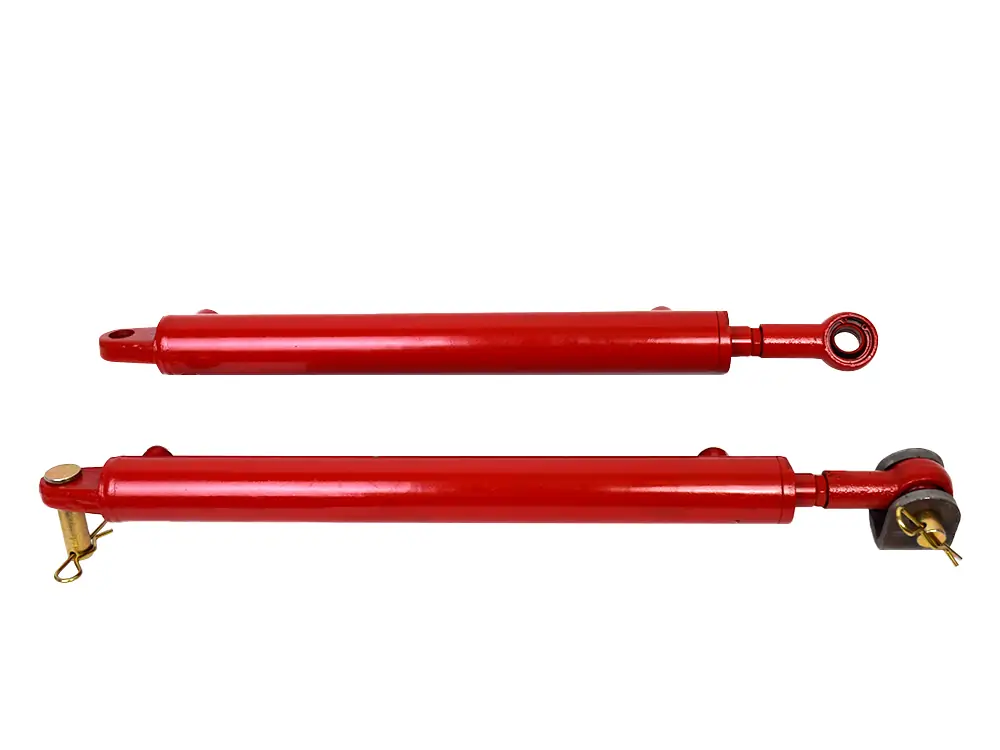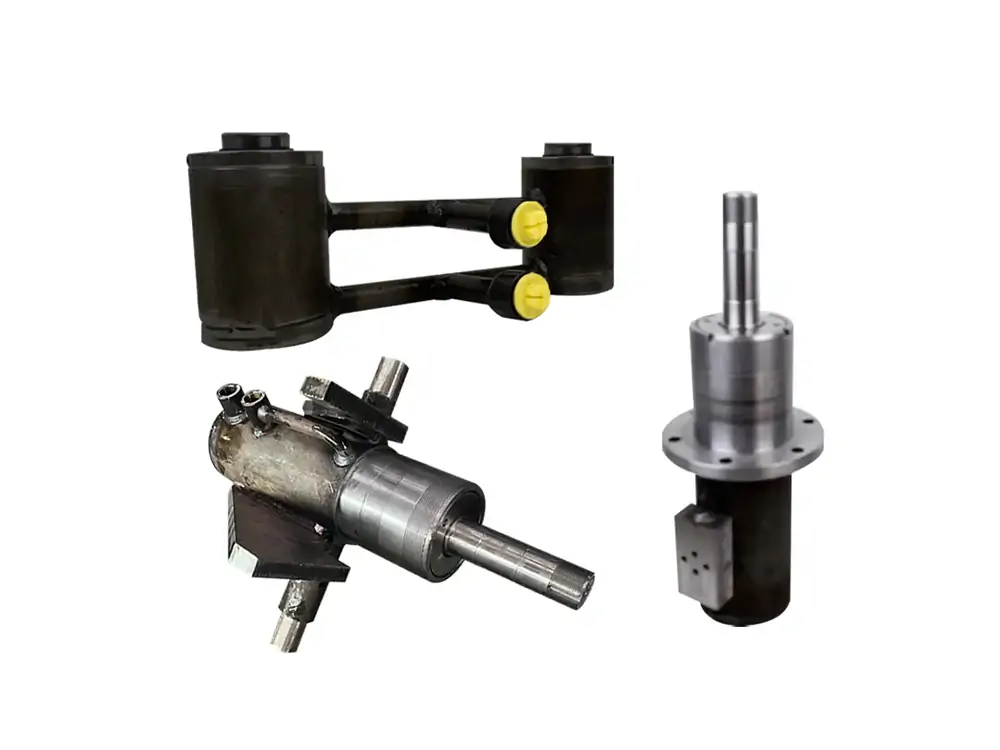Introduction
Hydraulic Cylinders are the essential components that generate a linear force based on fluid movement and pressure. In the heavy-duty work, they do wonders by offering an endless force.
Since they are robust, maintenance is necessary to achieve the expected performance. Sometimes, they fail to implement the required force and need a thorough checkup. That is the case when hydraulic experts have to disassemble their hydraulic cylinders. Now the question is— how can you disassemble hydraulic cylinders?
We will shower light on the hydraulic cylinder components and understand how they can be disassembled for repair purposes.
Understanding a Hydraulic Cylinder
A hydraulic cylinder is a magic tool that utilizes the hydraulic fluid in its channels and generates the linear with its help. The pressure on the hydraulic fluid lets it flow through the hydraulic system.
Before you do open surgery on the hydraulic cylinder, know its components. What can they be? And what can you interact with during your efforts?
Let’s take a look.
- Ствол цилиндра. It is the channel that holds the fluid and piston. It is of prime importance for the hydraulic systems.
- Piston and Rod are brothers. One pushes the fluid and creates the forces. At the same time, the other part transfers the force to the external parts.
- End Cap (Head). A seal is available at one end of the hydraulic cylinder.
- Gland (Rod Seal). It is a magic tool that holds the fluid around the rod, preventing leakage and further hassles.
- Уплотнения и уплотнительные кольца. These seals and rings are promising barriers that keep the hydraulic fluid trapped inside the barrel. Its leakage is problematic for the whole system.
- Ports. They are the vessels that allow the hydraulic fluid to flow. The extension and retraction ports are there in the double-acting hydraulic cylinders.
Tools and materials required to disassemble a hydraulic cylinder
Before you attempt to disassemble the hydraulic cylinders, it is better to know what exactly you need. Here is the list of tools that are used in hydraulic cylinder disassembly.
- Adjustable wrenches and spanners are there to tighten up the fittings. During the disassembly, they can help loosen nuts and fittings.
- Pipe wrenches help uncap the ends of the pipes and disassemble them efficiently.
- Allen keys or socket sets comprise a variety of tools that are helpful in the disassembly of the hydraulic cylinder.
- Screwdrivers (flathead and Phillips)
- Soft mallet or rubber hammer. It can hit the heavy components and disassemble them.
- Hydraulic cylinder service tools guide better.
- Clean rags and absorbent materials are the ideal tools for cleaning up fluid spills and components that need the perfect cleaning.
- Non-abrasive cleaning solvents are also helpful in cleaning the components safely.
- When spilled or removed from the barrel and pipes, an oil drain pan or bucket collects the hydraulic fluid.
- Safety gloves, goggles, and appropriate clothing are ideal for the experts’ safety.
- Workbench or cylinder stands offer the stability of the work.
Safety precautions before disassembly
Do you want to disassemble the hydraulic cylinders? Relax! It is not a significant hassle but can be risky if you do it safely. We have added a few parameters to ensure the safety of hydraulic cylinder disassembly. Let’s go through the efforts.
Depressurize System
A pressurized hydraulic cylinder can implement force at a time. All your focus must be on the depressurization of the hydraulic cylinder. How can you do that?
- Turn off the hydraulic cylinder.
- Check for any running components.
- Start exploring and dissembling when you are sure of the depressurization.
Secure Cylinder
Imagine for a moment. You place your hydraulic cylinder on a bizarre and irregular surface. What will happen?
The result is straightforward. The disassembly of the hydraulic cylinder will be full of hassles and danger. Either find a stable surface or fix your hydraulic cylinder properly. It must be stable when you are working on your hydraulic cylinder.
Wear protective equipment
Many people take the hydraulic cylinder disassembly lightly. They think it is a safe procedure. Guess what? A slight mistake can burn down your skin.
Therefore, get your gloves, goggles, and safety kits ready for wearing. Ensure it is pretty protective and doesn’t compromise your security.
Drain hydraulic fluid
A significant amount of the hydraulic fluid can cause the heavy force. You have to fight for safety when the hydraulic cylinder contains the fluid.
First of all, remove the hydraulic fluid from the cylinder barrel. Don’t sit idle until the whole fluid is out of the barrel.
Step-by-step guide to disassembling a hydraulic cylinder
Is your hydraulic cylinder ready to disassemble? Have you taken all the tools and prepared your hydraulic cylinder? If yes, congrats! You can follow the steps below to start your DIY hydraulic cylinder expert job. Let’s go through various steps to open the hydraulic cylinder.
Step 1: Remove the hydraulic cylinder from the machine
Is your hydraulic cylinder mounted on the machine? Turn off the machine and start dismounting the hydraulic cylinder.
- Disconnect the hydraulic hoses and pipes from the ports.
- Seal the ports or pipes to avoid hydraulic fluid spills.
- Use the appropriate lifting tools to remove the hydraulic cylinder from the machine.
Drain the hydraulic fluid once the cylinder is removed from the machine. Tilt the cylinder at a specific angle until all the fluid is out of the system.
Step 2: Clean the External parts of the Hydraulic Cylinder
Grab your cleaning rag and non-abrasive solvent. Take clothing pieces and clean up the external components, such as cylinder barrels, rods, and caps.
Remove all the dirt. Why are you doing so? The logic is simple. When your external components are clean, they can’t penetrate inside the internal components when cleaning. So, you are safe.
Step 3: Stabilize your Hydraulic Cylinder
What have you purchased to secure your hydraulic cylinders? A cylinder stand or sturdy workbench is a good idea. When mounting the hydraulic cylinder on such a surface, ensure it is 100% secure. There is no instability or motion.
To further stabilize, you can harness the other tools like the clamps and straps. They will prevent the hydraulic cylinders from rolling or moving disorderly.
Step 4: Remove the end cap or head
The first step is locating the end cap and removing it instantly.
The disassembly is simple. Find out the retaining mechanism and opt for the following removal aspects.
- Remove Snap Rings using the specialized Snap Rings pliers.
- Use the screws or strap wrench to remove the threaded end caps.
- Use the wrench for the tie-rod cylinders.
All such tools will ensure the safe removal of the end cap or head of the hydraulic cylinder.
If there is corrosion or dirt on the cap, hit it with the hammer.
Step 5: Remove the piston rod assembly
It is time to remove the piston rod assembly. Here is what you should follow.
- Once we have removed the end cap, the piston will be easy to remove. Pull the piston out of the cylinder barrel. Use a lifting aid or crane to remove the piston.
- Do this gently and thoroughly to avoid damage to the piston. Ensure there are no scratches on the pistons.
- Place your piston rod assembly on a neat and clean surface.
Step 6: Disassemble the piston rod
Move with the disassembly once you place the piston rod on a clean surface.
- Remove Nut. The nut can secure the piston. First of all, you have to remove it with the screw. Sometimes, a cylinder can have a threaded piston. So, remove it thoroughly.
- Slide Off the Piston. After removing the nut, it is easy to slide off the piston.
- Remove the Gland. It is super easy to remove if you use a screwdriver or seal pick.
- Remove Seals and O-rings. Harness the specialized tools for the removal of seals.
Avoid any scratches or other incidental abrasions on the components.
Step 7: Inspect Components
Why have you disassembled the hydraulic cylinder? For inspection purposes, right? Inspect the hydraulic cylinder components such as:
- Cylinder barrel.
- Piston rod.
- Seal and O-rings.
- End Caps and Gland
You can check these components for the following goals.
- If there are any scratches.
- Look for the abrasion points.
- Look for the threads and seals. Ensure every single component is 100% intact.
- Check the rust and dirt. Clean the components thoroughly until the whole system is clean.
What if a component has some damage? You can take immediate measures to repair it.
Заключение
Do you know how to fight the hydraulic components’ wear and tear? It is the maintenance. However, if you want to escape the maintenance hassles, you can get premium quality of the hydraulic cylinders. Optimize your project precision with the next-gen technology.
Where do you get such next-gen hydraulic cylinders?
QuanYe Hydraulic Cylinder Manufacturers is the ideal solution for that. Customize the single-acting or double-acting hydraulic cylinders based on your needs. Ensure the best rates with our experts. Enjoy a flawless deal! Explore our top collection right away!







